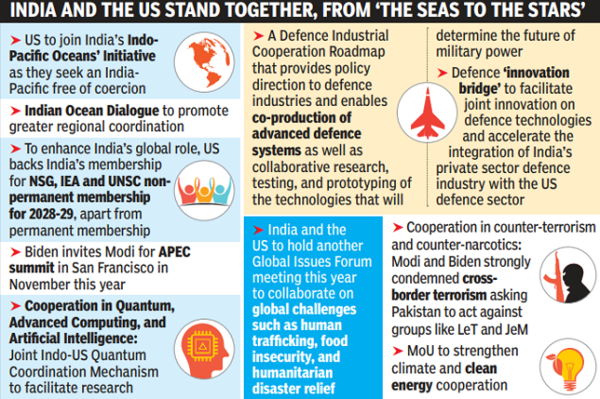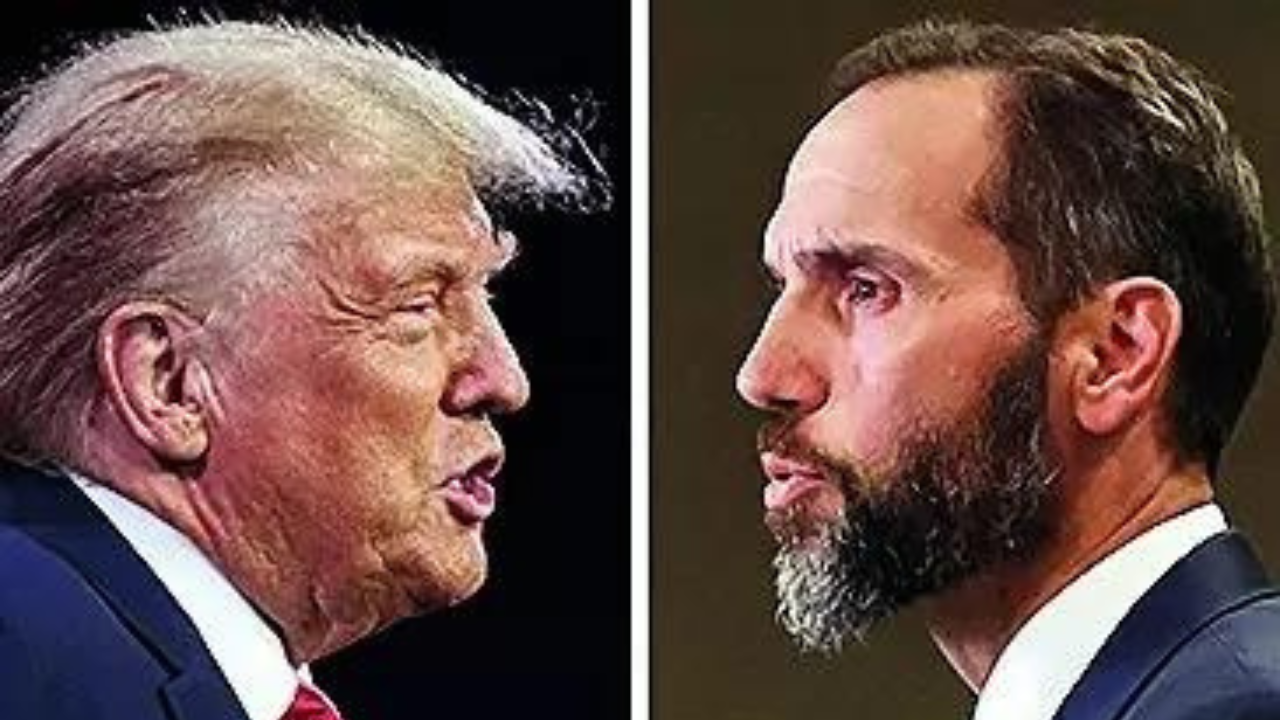“No corner of the human enterprise is free from the partnership between our two great countries, which stretches from the seas to the stars,” said the joint declarationheavy on tech specs, enthused, describing unprecedented engagement in artificial intelligence, semiconductors, quantum science, space exploration, among other cutting-edge areas.

Such is the emphasis on technology, particularly critical technologies, that agriculture, once the cornerstone of ties with a country that helped India become food enough, finds only fleeting mention in the joint statement. of 6000 words. The two sides have also chosen to move past decades of US sanctions that restricted India’s space and nuclear programs.
“The United States-India Comprehensive Global and Strategic Partnership is anchored in a new level of trust and mutual understanding and enriched by the warm ties of family and friendship that inextricably bind our countries,” the joint statement said, affirming a vision that characterizes them as “among the closest partners in the world.”
Indicative of the imminent passage of the heavy-handed US restriction on technology exports, President Biden reiterated his commitment to work with the US Congress to lower barriers to US exports. source code and high performance computing technology to India. The two leaders also ordered their aides to make regular efforts to tackle export controls, explore ways to improve high-tech trade and facilitate technology transfer between the two countries.
Live Updates: PM Modi’s US Visit
The two sides also launched two Joint Task Forces on advanced telecommunications, including the development of 5G/6G technologies, standards cooperation, facilitating access to chipsets for system development, and establishing joint research and development projects. They also welcomed the launch of a $2 million grant program under the US-India Science and Technology Endowment Fund for the joint development and commercialization of artificial intelligence (AI) and quantum technologies.
“The visit has not only been extremely rich in form but also rich in substance,” Indian Foreign Secretary Vinay Kwatra told reporters.

As part of the enhanced cooperation, the two sides will launch 35 innovative joint research collaborations on emerging technologies funded by the US National Science Foundation (NSF) and the Indian Department of Science and Technology (DST). Under a new implementing agreement between NSF and DST, both parties will fund joint research projects in computer and information science and engineering, cyber-physical systems, and secure and trusted cyberspace.
In addition, NSF and India’s Ministry of Electronics and Information Technology will provide new funding for joint projects in applied research areas such as semiconductors, next-generation communication, cybersecurity, sustainability and green technologies, and intelligent transportation systems.
Celebrating the historic signing of an MoU between General Electric and Hindustan Aeronautics Limited to manufacture GE F-414 jet engines in India for the Mk 2 light combat aircraft, they called it a “pioneering initiative… that will enable greater US jet engine technology transfer than ever before.”
They also welcomed the emergence of India as a hub for maintenance and repair of front-deployed US Navy assets and the conclusion of Master Ship Repair Agreements with Indian shipyards. , a throwback to the World War II era when American planes in the Asian theater of operations flew to Bangalore for maintenance. and repair
Without naming China, the two leaders expressed concern over its coercive actions in the region, while strongly opposing “destabilizing or unilateral actions that seek to change the status quo by force.”
Pakistan found a more direct mention, as it called on Islamabad to take immediate steps to ensure that no territory under its control is used to launch terror attacks and that the perpetrators of the 26/11 attacks in Mumbai and Pathankot are brought to justice. .






Be First to Comment